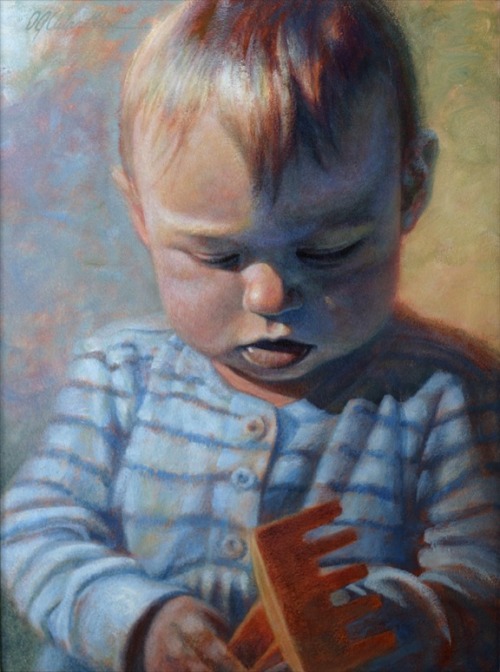The Pensive Palette: Opposites Attract
'Annika At One' | Aug 26, 2001 | 16”x12” Acrylic on board
When I decided to paint our eldest daughter on her first birthday, I
chose to work in a fairly simple and classic portrait format. I wanted
the emphasis to be on her without a lot of distractions…
In order to keep the painting interesting and alive, I made color
choices from a design point of view. In this case, I employed
complimentary or “opposite” colors. These are the colors that are
across from each other on the color wheel and are often used to enhance
contrast.
The main complementary pair I used was blue and orange, but there is
also the yellow/purple pairing. In order to make all of these colors
work together, I chose blue to be my dominant color so the four colors
wouldn’t compete. I also made sure to desaturate most of the colors to
keep them all fairly quiet. Orange, the complement of my dominant blue,
is the most saturated color. This was done to help emphasize her hair
and the shovel and create visual points of interest for the eye to go
between.
I made the shadow side of her face a very subtle purple to give our
eyes a break from the dominant blue. In order to give this purple
shadow a bit of color harmony, the background on the right side of the
painting tends toward yellow. Because I kept these colors quite
desaturated, they do not look garish. In fact, if you look closely you
will see all of the colors of the rainbow in the painting, but
desaturation keeps the color palette—and the final painting— in balance.










